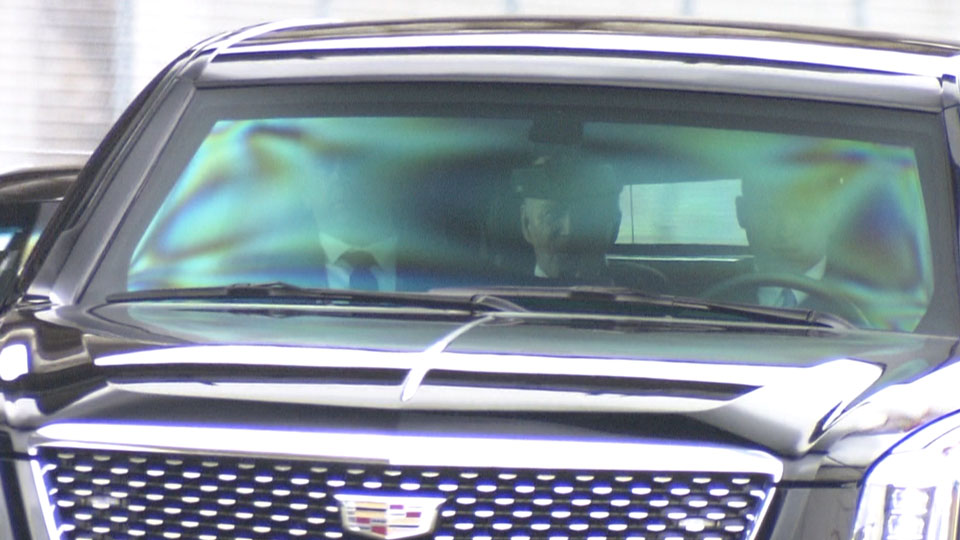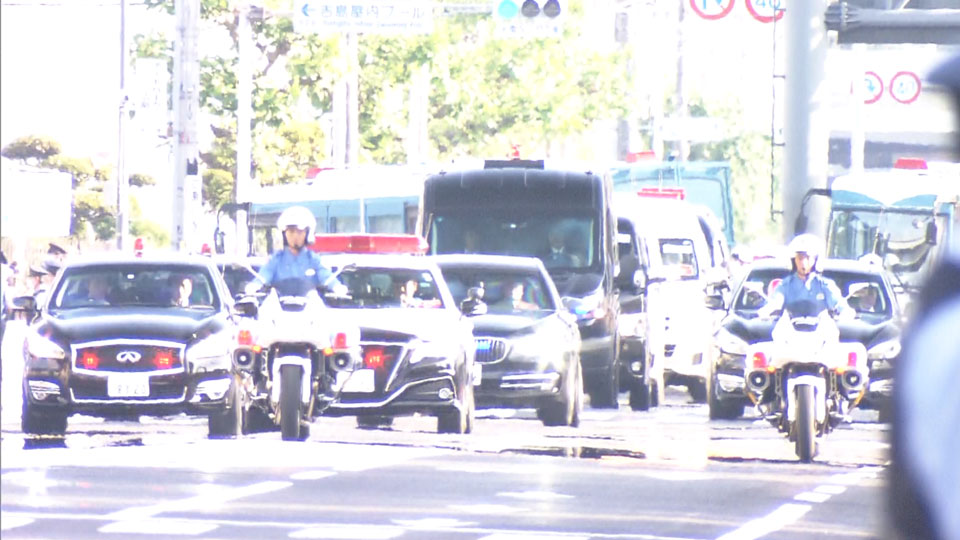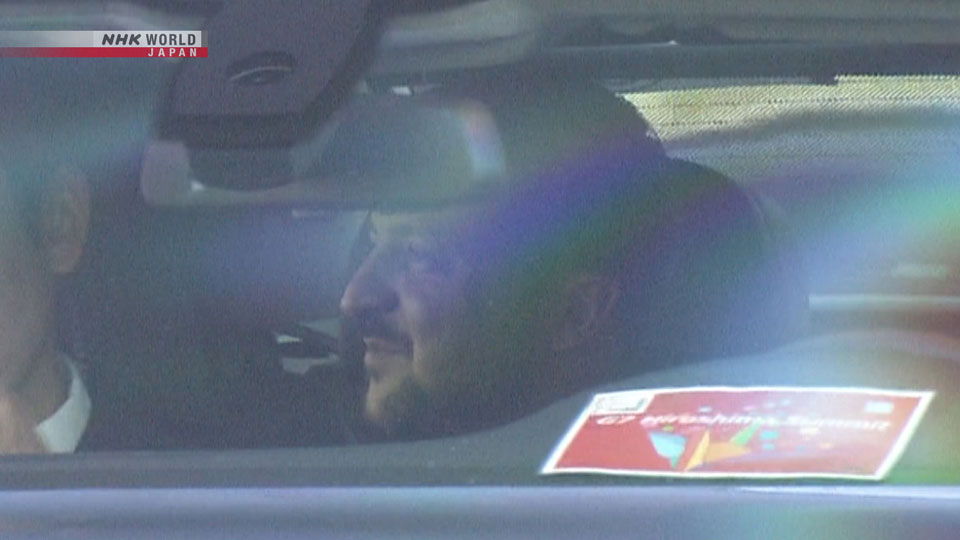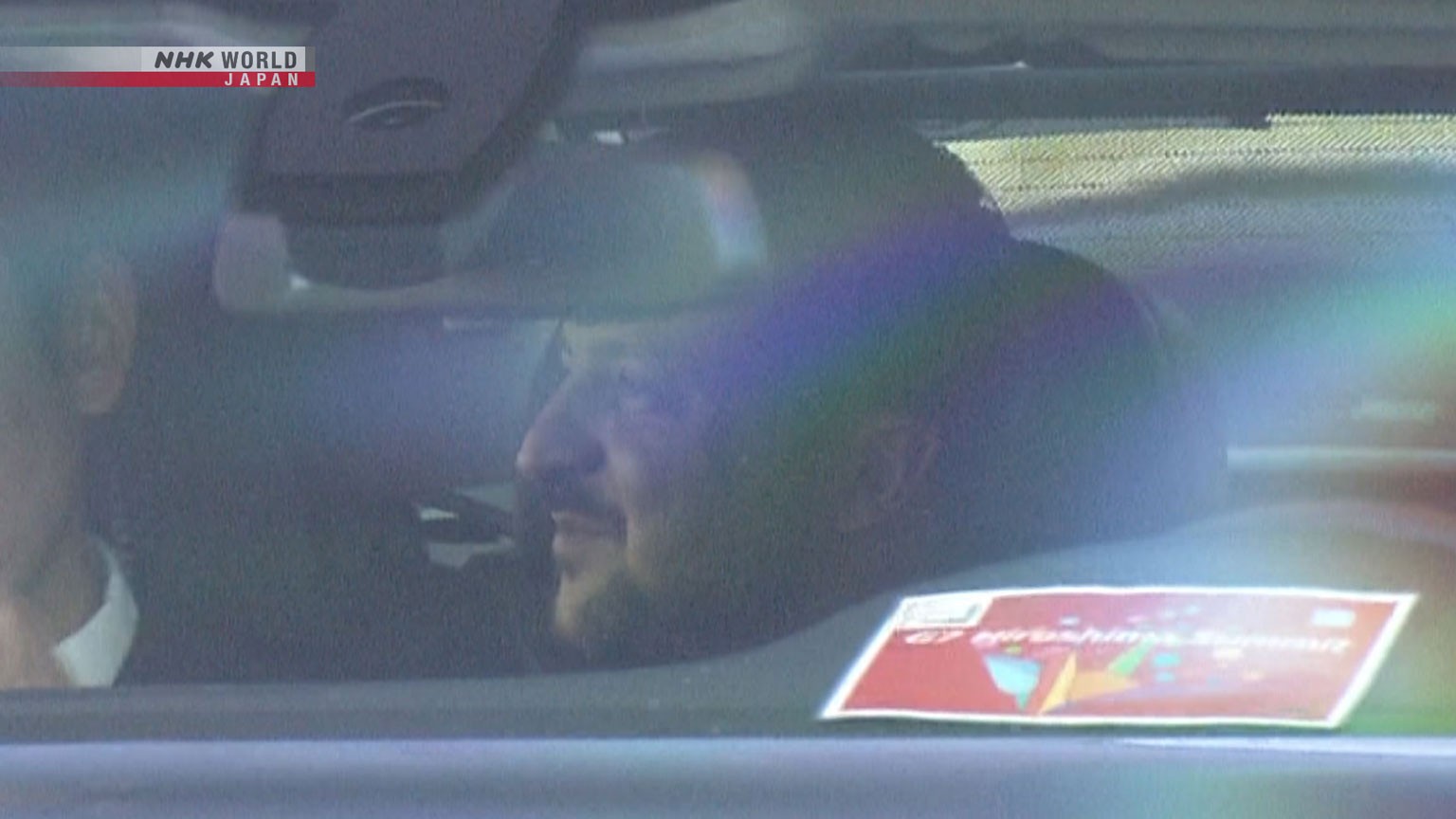A moment that matters
I was among the many video journalists who took to the streets to film motorcades at the summit. The aim was to capture the faces of the leaders inside the vehicles. Their expressions can say a lot.
For example, the images we saw of Japanese Prime Minister Kishida Fumio on the summit's opening day, US President Joe Biden at the Cenotaph for the Atomic Bomb Victims and the first appearance of Ukrainian President Volodymyr Zelenskyy on the stairs of his aircraft all painted a picture of how they were feeling.
The media's window of opportunity often only lasts a few seconds, but before that moment is a mountain of preparation and patience.
Behind the glass
To shoot subjects in a car, we attach a polarized light filter to the lens to limit reflection.
For a normal car, the filter works well and the camera will produce pretty clear images. But it's a different story for vehicles with bulletproof glass, like those transporting the G7 leaders. It gives off a rainbow-colored reflection.

Video journalists have to look for gaps in that rainbow reflection.
While it can be easier to see through a side window, facial expressions are more difficult to make out in profile. I wanted to shoot the leaders, especially Zelenskyy, from the front. Success, however, greatly depends on the angle and the direction of the light.
I managed to get a shot of Biden on May 19 as he headed to the summit venue after visiting Hiroshima's Peace Memorial Park. That gave me confidence, and I was able to do the same with some of the other leaders as well.
Zelenskyy's one-second smile
On May 21, the final day of the summit, I had a chance to see Zelenskyy as he traveled from the summit venue to the Peace Memorial Park.
I arrived on location three hours before he was scheduled to pass, and before police put traffic restrictions in place.
People began to gather on the roadside.

I kept in contact with my boss via a radio transceiver. He told me which car to look out for.

And action! Through my viewfinder I could see Zelenskyy waving his hand as he talked to someone alongside.


For just a second, he bore a gentle smile when he saw the people gathered along the road. He looked so different from the hard, tough man we often see on television.
As my colleague explained to me, Zelenskyy has little to smile about. "But when he has come all the way to Japan and sees that he has a warm welcome, he smiled broadly. It's possible he felt he could briefly relax," noted my coworker.
Only 15 seconds passed from the time I first saw Zelenskyy's car to when it was gone. His smile lasted one second — and my lens captured that.
It's our job as camera operators to capture people's faces clearly, no matter their expression. Viewers can make up their own minds about what those expressions mean.
I hope the footage I took of Zelenskyy gave people an opportunity to think about why he came all the way to Hiroshima to have face-to-face dialog.

Click here for the Japanese version: https://www.nhk.or.jp/kochi/lreport/article/001/59/

